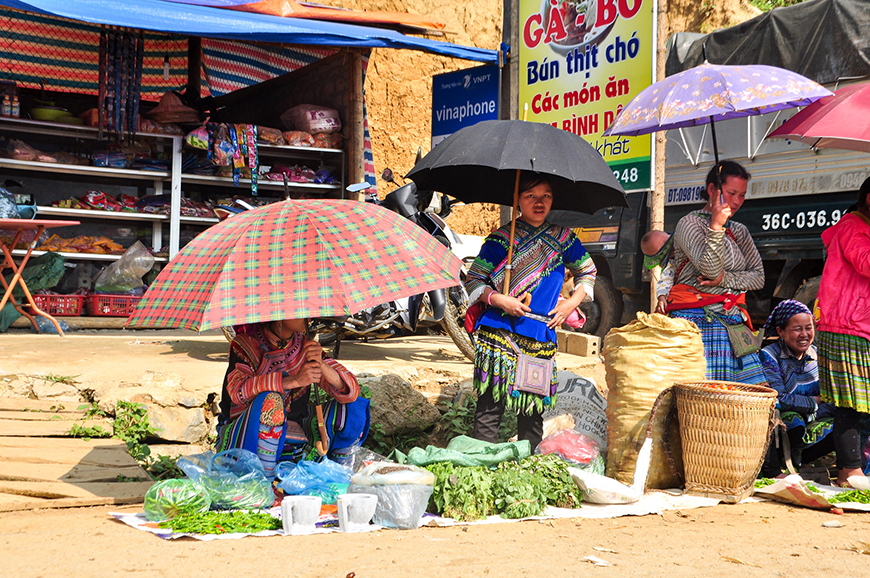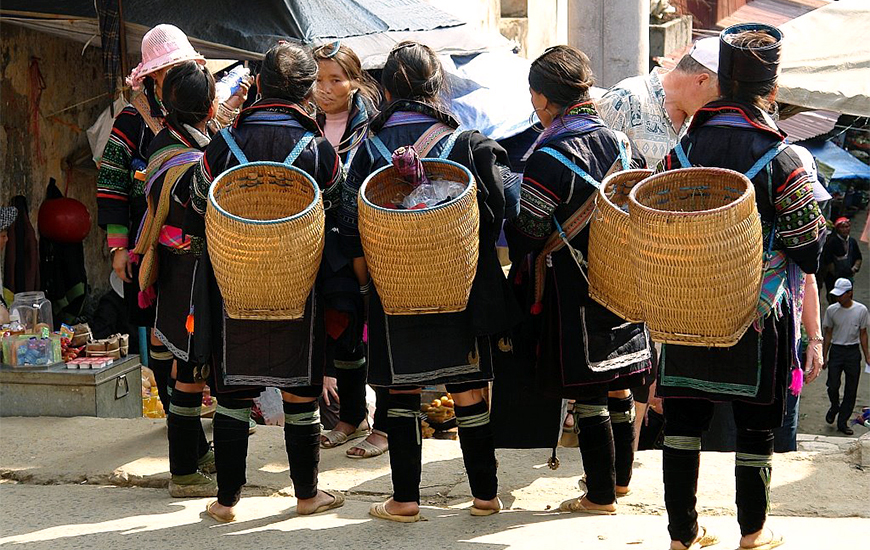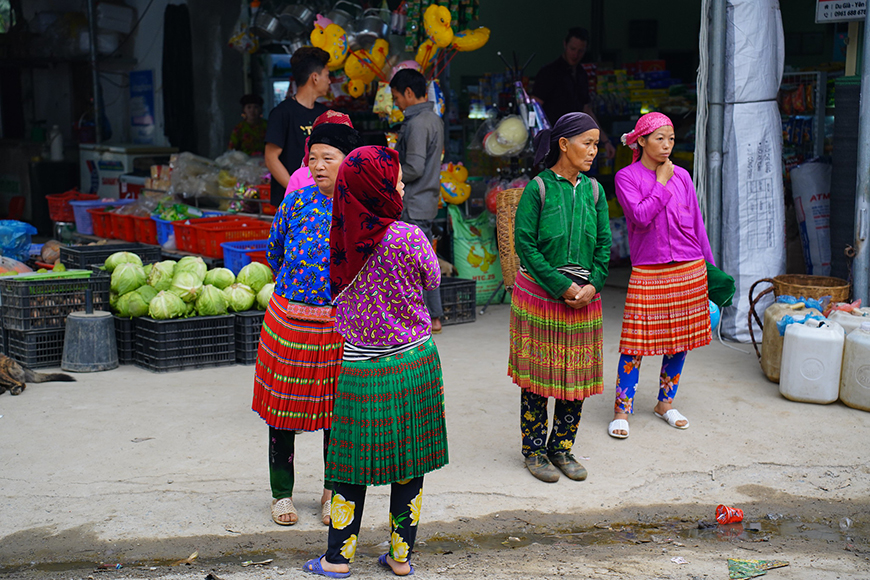If you're looking for a truly immersive cultural experience, look no further than Northern Vietnam. Nestled in the breathtaking mountains of this region lies a treasure trove of ethnic diversity and cultural richness. With over 50 distinct ethnic minority groups, each with their own unique traditions and customs, Northern Vietnam offers a rare glimpse into centuries-old traditions preserved amidst a rapidly changing world.
Prepare to be captivated as we embark on a journey to discover the fascinating ethnic communities that call Northern Vietnam home. From the historical background to the geographical context and the vibrant diversity of ethnic groups, we will explore the richness and beauty that lies within this region.

Northern Vietnam is home to a wide variety of local communities - Source : Mr Linh's adventures
Unraveling the Historical Tapestry
The history of ethnic minorities in Vietnam dates back to ancient times. As agriculture emerged, formerly nomadic tribes gradually transitioned into settled communities, leaving behind their hunter-gatherer practices. These diverse populations, with their distinct origins, languages, customs, and cultures, voluntarily formed communities, becoming the ancestors of the ethnic groups we know today. This rich cultural heritage has shaped the unique identity of Vietnam, a country that celebrates diversity and fosters peaceful coexistence, promoting an ongoing dialogue between different traditions. Each of these communities has made its own unique contributions, adding to the vibrant tapestry of contemporary Vietnamese identity.
A Glimpse into the Geographical Marvels
Northern Vietnam is a captivating region where majestic mountains merge with lush valleys and terraced rice fields. With its spectacular landscapes, this region is a melting pot of cultures, particularly in the provinces of Ha Giang, Lao Cai, and Cao Bang. These breathtaking landscapes serve as a backdrop for traditions and cultural activities that have been passed down for centuries, offering visitors a rare insight into a cherished ancestral heritage. Each community has developed its own customs, rituals, and craftsmanship, contributing to the richness of the region. Exploring these remote areas, one is immediately awed by the wild beauty of the surroundings and the vitality of the entrenched traditions. It's a true immersion into an authentic and preserved Vietnam, where one can admire breathtaking scenery and discover a mosaic of fascinating cultures.
A Tapestry of Ethnographic Diversity
Among the many ethnic groups in Northern Vietnam, the Hmong, the Dao, the Tay, the Nung, and the Thai are among the most iconic. Each community possesses its own unique cultural identity, shaped by centuries of history and traditions. These ethnic groups maintain traditional ways of life, preserving ancestral practices such as terrace farming, craftsmanship, traditional music, and dance. The Hmong, for example, are renowned for their mastery of terrace farming practices, while the Dao are known for their textile skills and stunning traditional attire.
By exploring these ethnic communities, visitors have the opportunity to immerse themselves in unique experiences, from discovering their ancient traditions and participating in traditional festivities to learning local handicrafts and even staying in a traditional village house. It's a chance to not only witness the vibrant diversity of cultures but to also gain a deeper understanding and appreciation for the unyielding spirit of these communities, who continue to thrive amidst a changing world.
Embark on an unforgettable journey as we delve deeper into each ethnic minority group, discovering their captivating traditions, mesmerizing music and dances, and timeless customs that have withstood the test of time. Join us in unraveling the wonders of Northern Vietnam's hidden cultural treasures!

Hmong people, Bac Ha market - Source : Mr Linh's adventures
The Hmong
Origins and History
The Hmong, also known as Mông, are one of the most notable and visible ethnic minorities in northern Vietnam. Their history dates back several centuries when they fled invasions and persecutions in China and migrated to Vietnam. They settled primarily in the northern mountains, where they have managed to preserve their traditional way of life. Let us delve into the fascinating history of this people and discover their way of life, dynamic culture, and unique cultural heritage.
Lifestyle, Culture, and Folklore
The Hmong live in close communion with nature in villages perched on the slopes of the mountains. They practice traditional agriculture based on slash-and-burn farming and terrace cultivation. In often challenging weather conditions, they mainly cultivate corn, rice, and other mountain-adapted crops. Their culture is deeply rooted in their agrarian way of life, where they depend on their harvests for sustenance.
Hmong culture is vibrant and is reflected in their colorful and intricately hand-embroidered clothing. Each Hmong subgroup, such as the Black Hmong or the Red Hmong, has its distinct patterns and colors. This adds to the diversity and beauty of their traditional attire. Their cultural heritage is also expressed through their numerous celebrations, which are punctuated by music and traditional dances. These events are moments of joy and gathering for the Hmong, where they celebrate their culture, honor their ancestors, and strengthen community bonds.

Black Mong - Source : Internet
Language and Culture
The Hmong take pride in their distinctive language, which is part of the Hmong-Mien language family. Each Hmong group has developed its dialect, which can sometimes complicate communication between different villages. However, this linguistic diversity is a testament to the richness of their ancestral culture. Animistic traditions and beliefs hold a central place in the lives of the Hmong, giving profound meaning to their existence. Shamans play an essential role as intermediaries between the human world and the spirit world. They guide their community through divination and ancestor worship, thus preserving ancestral knowledge that has been passed down from generation to generation.
Challenges of Modernization and Cultural Preservation
Hmong culture faces challenges in the era of modernization and globalization. The advent of new technologies and the adoption of more contemporary lifestyles seriously threaten their ancestral traditions. However, efforts are being made to preserve this unique cultural heritage through community tourism and the learning of the Hmong language. Although these initiatives are sometimes marginal, they contribute to the safeguarding of this exceptional heritage.
The goal is to find a balance between progress and the preservation of Hmong cultural identity. These initiatives aim to perpetuate Hmong traditions in an ever-changing world. It is essential to preserve this unique wealth for future generations. Hmong culture is a treasure to protect and transmit, as it offers a unique perspective on the history, traditions, and values of this colorful and vibrant people living in the northern mountains of Vietnam.
► Would you like to meet these local communities? Follow the guide!

Dao People - Source : VN Express
The Dao
The Dao, also known as Yao or Zao, are a significant minority in northern Vietnam, with a population of approximately 1 million people. Like the Hmong, they have Chinese origins and settled in the mountainous regions of Vietnam several centuries ago. Their history is marked by various migrations and adaptations, showcasing their resilience and ability to shape a unique culture.
Lifestyle, Culture, and Folklore
Divided into several subgroups, the Dao live in villages nestled amidst terraced rice fields. Their way of life is closely connected to nature and agriculture, which is reflected in their craftsmanship and traditions. Dao women are renowned for their decorative weaving, using elaborate and colorful patterns to create beautiful garments. Men, on the other hand, are known for their metalwork, crafting tools and ornaments used in daily life.
What particularly distinguishes the Dao is their traditional costumes. Women often wear distinctive turbans and decorative belts, while men don elegant and functional clothing. Their costumes are often adorned with intricate embroidery and beads, reflecting the rich cultural heritage of this community.
In addition to their craftsmanship and clothing traditions, the Dao are also known for their extensive knowledge of medicinal plants. They have developed encyclopedic expertise in the properties of plants and their use in treating illnesses. This traditional herbal medicine holds a central place in their culture, with knowledge passed down from generation to generation.
The history and culture of the Dao are also rich in folklore and oral traditions. They tell tales and legends that have been passed down through generations, recounting the exploits of heroes and imparting moral teachings. These narratives are an integral part of their cultural identity and a source of pride for the community.
Despite the challenges they have often faced, such as forced displacement and political changes, the Dao have managed to preserve and thrive with their unique culture. Their resilience and adaptability have contributed to their survival as a distinct group and the preservation of their cultural heritage.

Dao embroiderer - Source : Sapa Landscapes
Language and Culture
Enriched by their cultural heritage, they celebrate numerous traditional festivals throughout the year, but among them, Dao New Year holds a prominent place. This celebration is marked by a period of community festivities and fascinating ancestral rituals, providing deep insights into the spirituality and culture of the Dao.
Dao New Year is a time of renewal and rejoicing for the community. Preparations begin well in advance, with purification rituals and offerings to ancestors. Community members gather in their finest traditional costumes, adorned with colorful embroidery and patterns, thereby conveying their pride and cultural identity.
One of the notable traditions of Dao New Year is the "Ban Me" ritual, which involves a lively procession through the villages. This procession is led by a shaman, an essential spiritual figure in the lives of the Dao. Shamans play the role of privileged intermediaries between the human world and the spirit world. They guide their community through the mysteries of the unseen, preserving an age-old tradition. During the "Ban Me" ritual, the shaman enters a trance and communicates with the spirits, bringing guidance and blessings to the community.
Food also plays an important role in Dao New Year festivities. Families prepare delicious traditional dishes, such as "com lam," rice cooked in bamboo, or "men men," a salad of grated vegetables and meat. These dishes symbolize abundance and prosperity for the coming year.
Dance and music also take center stage during the festivities. Dancers and musicians showcase their talents in colorful performances, captivating the attention of all participants. The graceful movements of the dancers and the enchanting melodies of traditional instruments create a joyful and mesmerizing atmosphere.
Dao New Year is much more than a mere celebration. It is a time when the entire community comes together to honor their traditions, renew social and spiritual bonds, and eagerly welcome the year ahead.
Immersing oneself in the world of the Dao people is to experience a vibrant ancestral culture, open to the dialogue between the visible and the invisible.

Hmong women - Source : Mr Linh's adventures
Closing Remarks
These iconic communities are just a glimpse into the ethnic treasures of northern Vietnam. In the next part, we will continue our exploration by discovering the fascinating cultures of the Tay, Nung, and Thai, other jewels of this land of diversity.